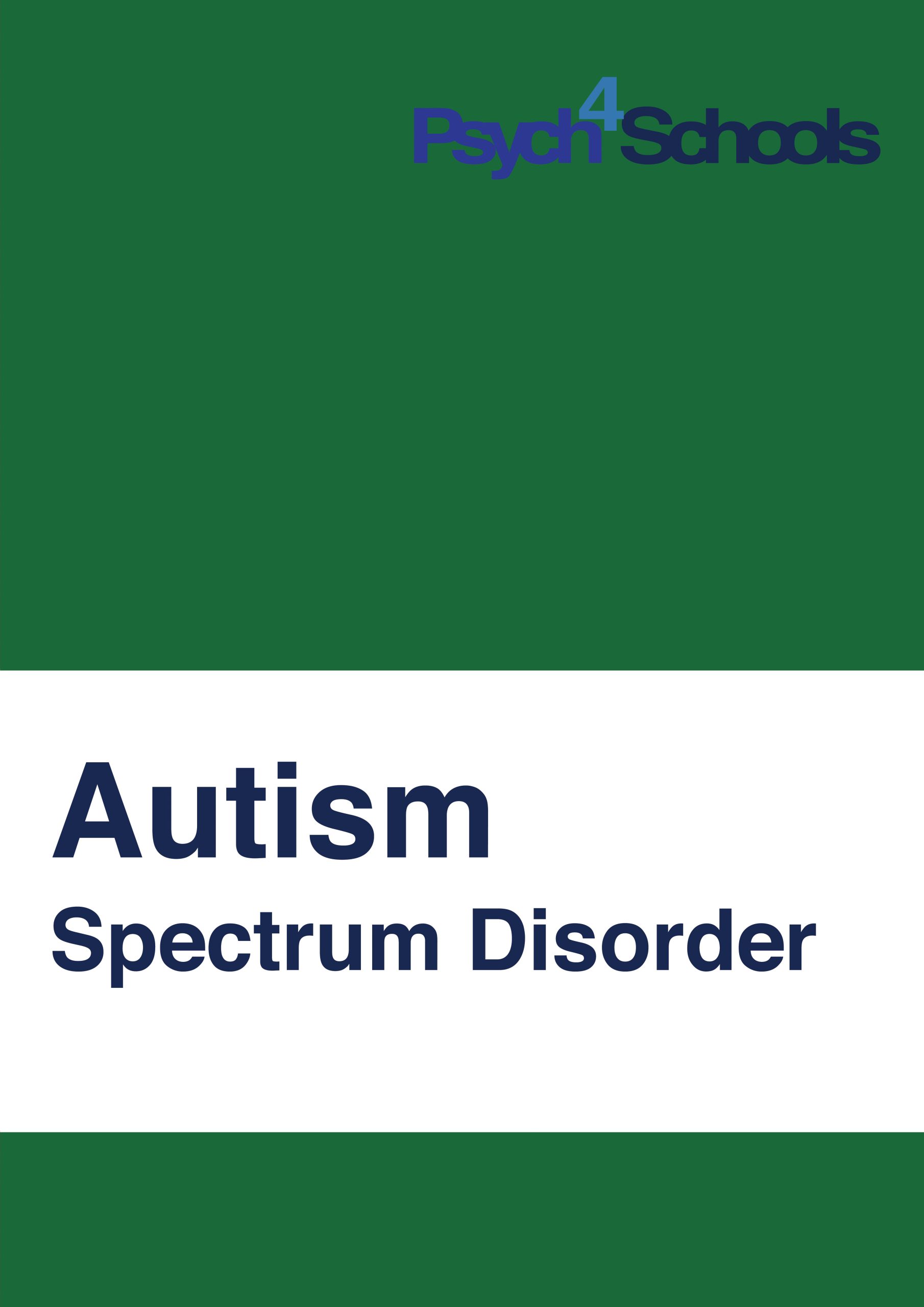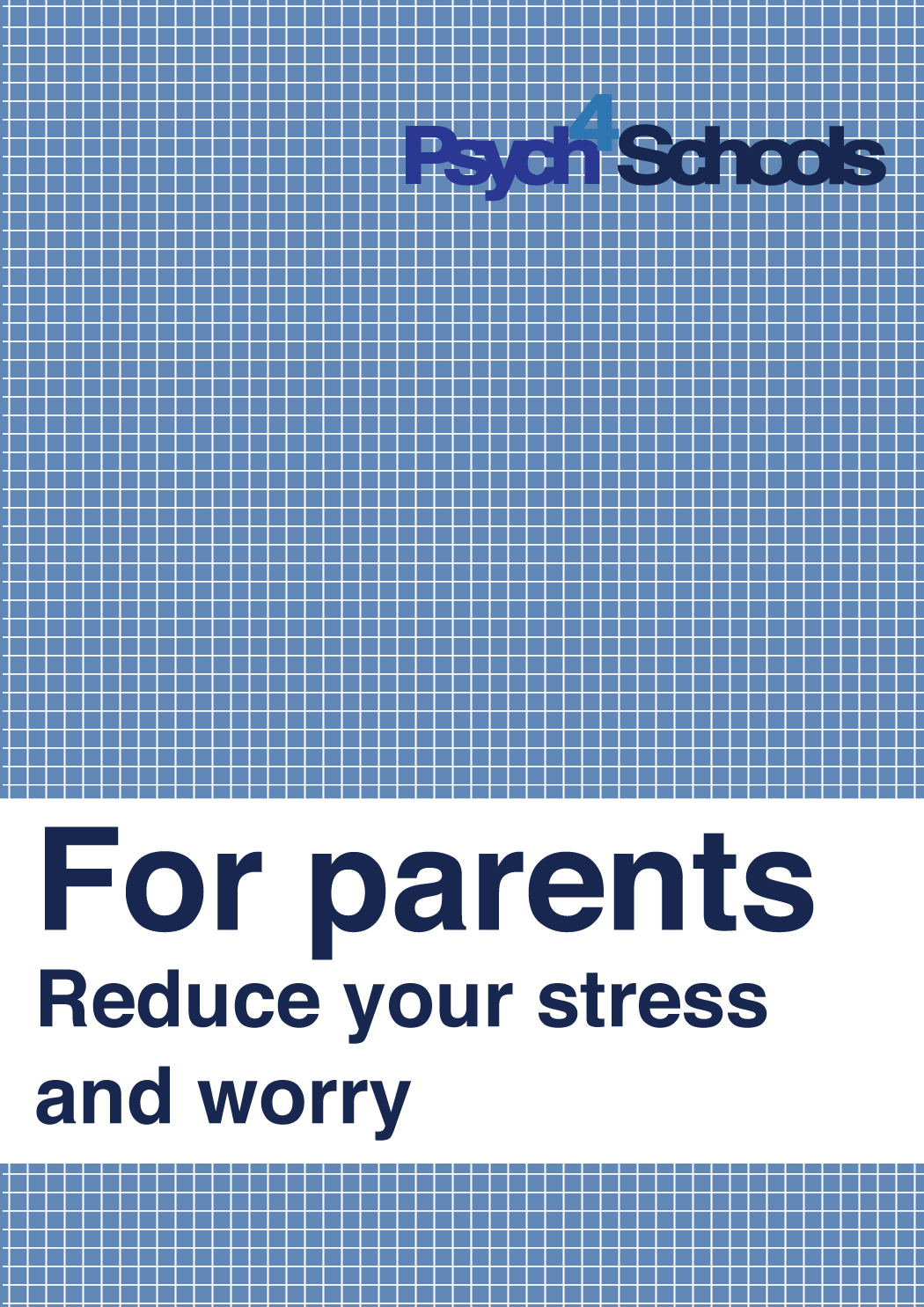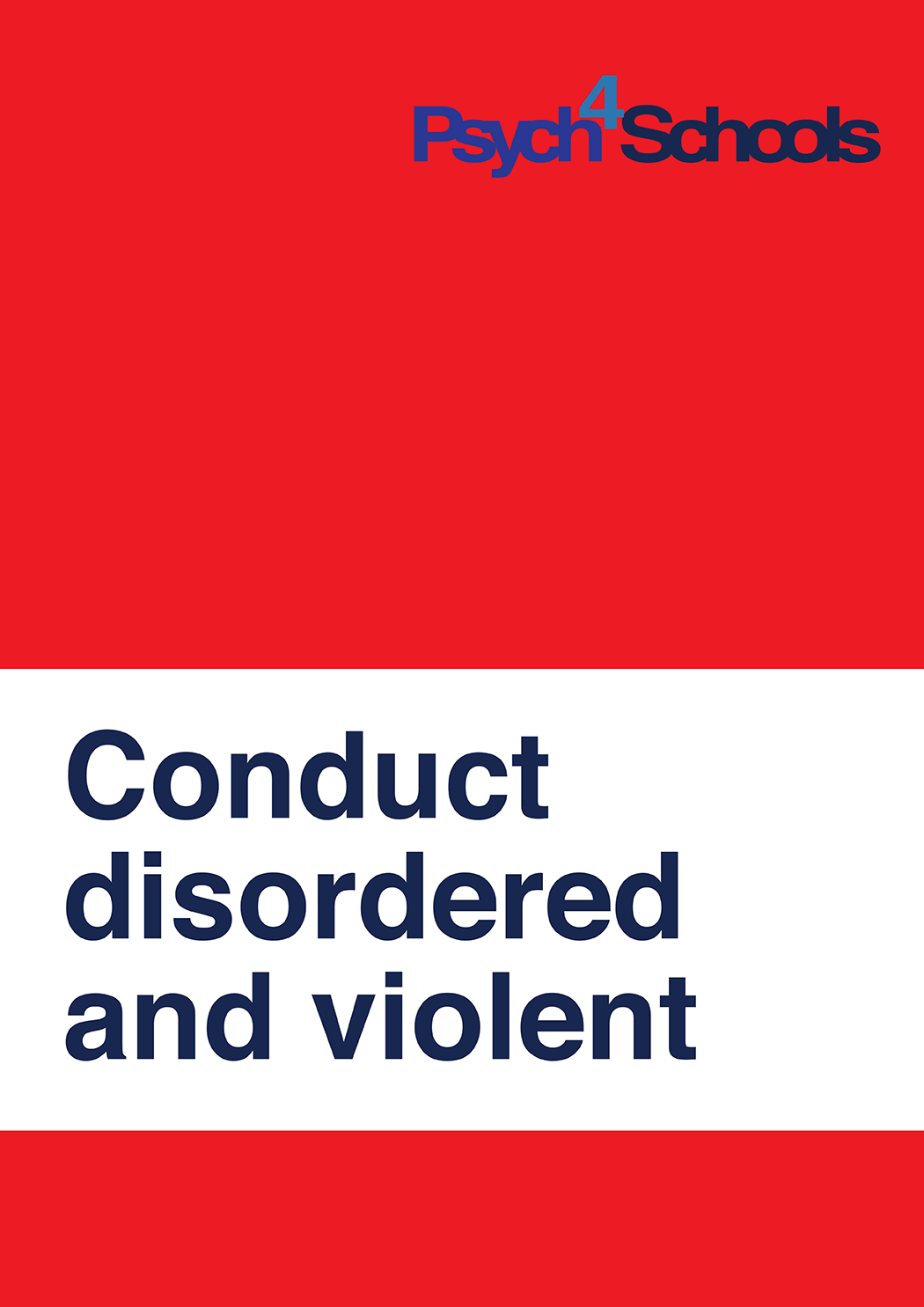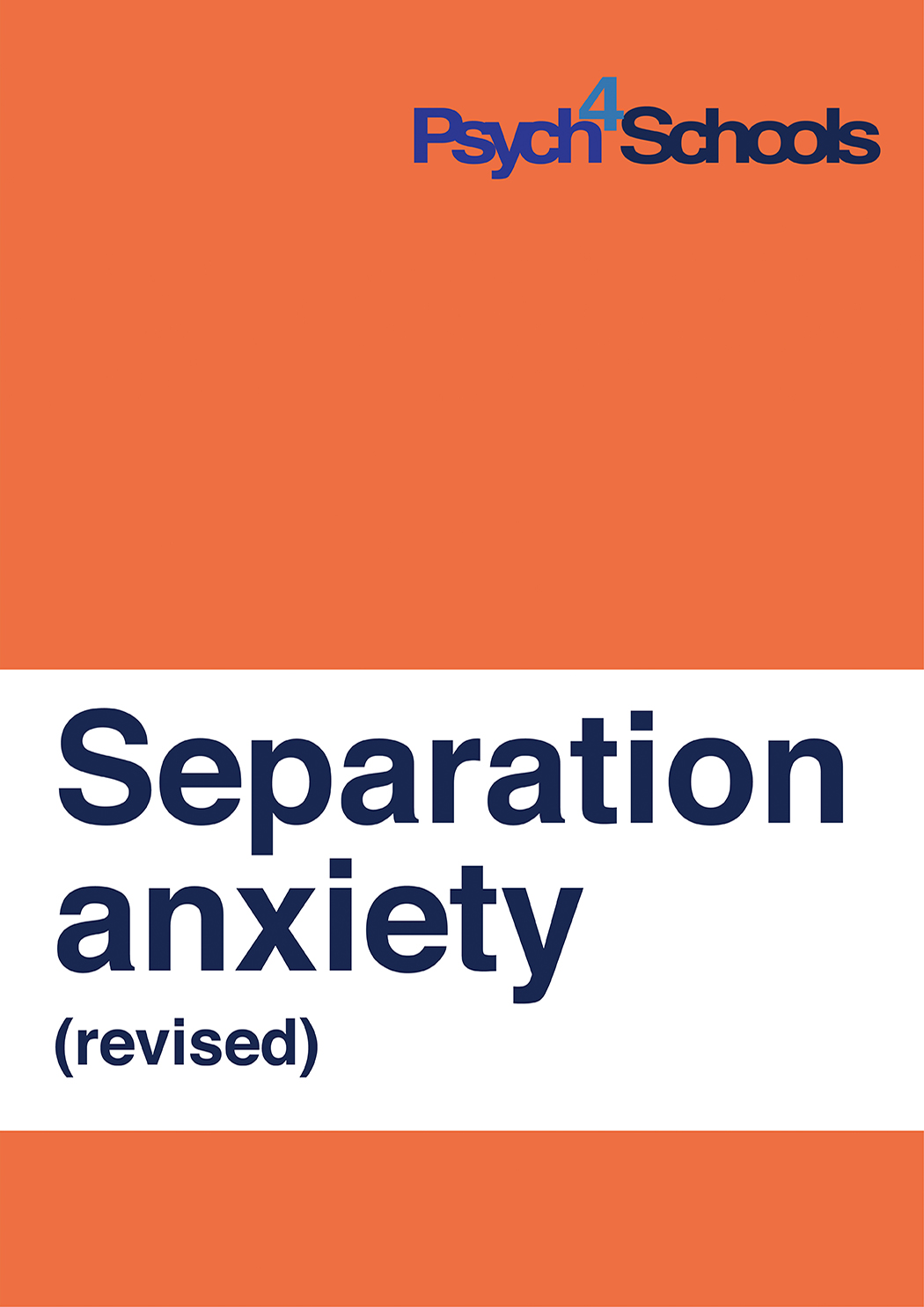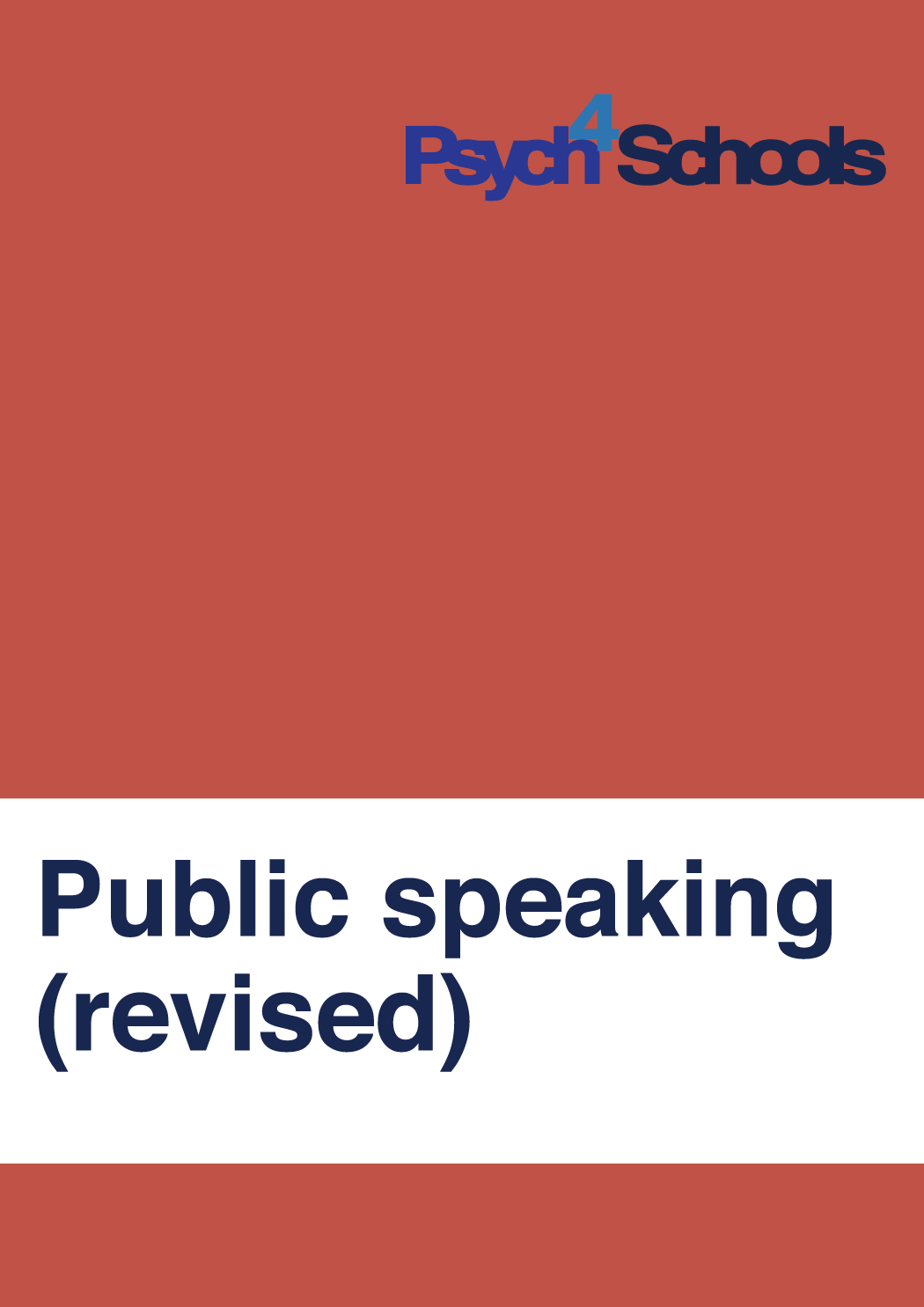Autism Spectrum Disorder
The following is an excerpt from the ebooklet Working with children diagnosed with autism spectrum disorder (ASD) by Murray Evely.
Introduction
Children with a diagnosis of autism spectrum disorder
What is autism spectrum disorder?
National guidelines on autism spectrum disorder (ASD) describe autism as a collective term for a group of neurodevelopmental disorders characterised by persistent deficits in social communication and social interaction, and by repetitive patterns of behaviour and restricted interests. The behavioural features that characterise ASD are often present before three years of age but may not become apparent until the school years or even adulthood. The developmental challenges, signs and symptoms of ASD can vary in nature and severity between individuals, and in the same individual over time, and may be accompanied by mental and physical health problems. [1]Whitehouse, A, J, O, Evans, K, Eapen, V, Wray, J. A national guideline for the assessment and diagnosis of autism spectrum disorders in Australia. … Continue reading
Children with ASD interpret and respond to the world differently from neurotypical people. While many children diagnosed with autism will go on to live independent, productive, and rewarding lives, the disorder can present challenges for individuals, their families, and schools. As the name implies, autistic children can have a broad spectrum of strengths and difficulties, [2] Ure, A., Rose, V., Bernie, C., Williams, K (2018) Autism: one or many spectrums? Journal of Paediatrics and Child Health, 54, 1068 – 1072. and varying levels of intelligence and other co-existing conditions. There is no single cause for ASD.[3] Amaze, 2019- 2023. Shaping the future for Autism. About autism. https://www.amaze.org.au/understand-autism/about- autism
Around 1 in 70 Australians are currently diagnosed with ASD.[4] Debunking Autism Treatment Myths Video, Jessica Paynter Griffith University … Continue reading [5] Autism prevalence rate up by an estimated 40% to 1 in 70 people. Autism Spectrum Australia 11 July 2018, … Continue reading In recent years, the diagnosis of autism has increased. It is believed heightened awareness and access to diagnosis may have contributed to an increase in reporting rates.[6] Australian Government. Autism in Australia (2017) Update https://www.aihw.gov.au/reports/disability/autism-in- australia/contents/autism. However, boys are still four times more likely to be diagnosed than girls [7]Steinbrenner, J. R., Hume, K., Odom, S. L., Morin, K. L., Nowell, S. W., Tomaszewski, B., Szendrey, S., McIntyre, N. S., Yücesoy-Özkan, S., & … Continue reading and many girls seem better able to mask their symptoms.
How is ASD diagnosed?
Children with autism may display behaviours such as those already described on a spectrum ranging from mild to severe. A diagnosis is based on the existence of a pattern of behaviours rather than a single behaviour or presentation. A multidisciplinary team of professionals, including paediatricians, psychologists and speech pathologists, typically make a diagnosis. Sometimes occupational therapists are involved. On occasion, diagnoses are made by a lead practitioners [8]ibid. Some children are diagnosed in preschool and early primary school, others may not be diagnosed until mid-to-late primary school, or later.
Appropriately experienced psychologists use a range of assessment tools which includes results from scales such as the Autism Diagnostic Observation Schedule 2nd Edition (ADOS-2), various parent and teacher rating scales, other psychometric, and adaptive behaviour scales. Speech pathologists conduct speech and language assessments such as the Clinical Evaluation of Language Fundamentals – 5th Edition. Based on assessment results, developmental history, teacher and parent observations, informal assessments and clinical observations a clinical diagnosis is formulated as outlined in the Diagnostic and Statistical Manual of Mental Disorders, Fifth Edition, Text Revision (DSM-5-TR). Often other assessments are made to consider co-morbid conditions such as ADHD and/or intellectual disability.
The DSM-V-TR describes three severity levels for ASD. Level 1 ‘requiring support’, level 2 ‘requiring substantial support’ and level 3 ‘requiring very substantial support’. Currently, in Australia most children with a diagnosis of ASD Level 2 or greater are typically funded under the National Disability Insurance Scheme (NDIS). State and Territory and Catholic Education Department criteria and funding requirements vary from one jurisdiction to another. For example, an ASD diagnosis alone may not be sufficient for funding if there is no evidence of additional educational needs and/or severe challenging behaviour.
Medicare has a Helping children with autism program to assist with early diagnosis and treatment before eligible children transfer to NDIS. Currently, up to twenty treatment services are available to be shared by a range of allied health providers to assist the referring specialist with diagnosis, treatment and management planning.
In some cases, the child may exhibit similar characteristics to siblings and one or both parents. Research indicates there are significant genetic links associated with autism within families. A diagnosis of autism in a child can prompt other family members to reflect on the possibility of themselves being investigated for the disorder. If appropriate, teachers can offer support (including parenting advice) from the school psychologist to the family.
Autism from a diagnostic perspective
A diagnosis provides details about specific challenges, capabilities, and the possible strategies and support structures to manage any challenges. An understanding of the child’s challenges and capabilities can assist teachers to guide peers in accepting, working with and supporting the child.
Caution
The assessment and diagnosis of individuals investigated for autism is a complex process, usually completed by a team of professionals. Teachers and those in schools need to be cautious not to refer to a child diagnosed with autism as having autism without parental consent or to misuse language concerning autism. There is now much media coverage of neurodiverse people, such as, the ABC television program ‘Love on the Spectrum’. Many people, including teachers, may feel they can refer to ‘Aspies or someone being ‘on the spectrum’ or ‘a little bit Aspy’. Such terms do not meet the conventional expectations of language used in school settings. The term High Functioning Autism is also no longer used.
Understanding ASD and its challenges
Characteristics of children diagnosed with autism spectrum disorder
Autistic children may display some of the following characteristics:
- Impaired social skills and difficulty understanding interactions between individuals and groups of children, such as,
- lack of understanding of rules of social behaviour, e.g., turn taking in conversations
- difficulty forming age-appropriate friendships despite wanting friends and often feeling left out or lonely
- problems reading others’ non-verbal body language, particularly facial expressions, gestures and body position cues
- difficulty in correctly identifying emotions in other people
- poor understanding of personal space
- lack of empathy or inability to imagine what another child might be feeling
- limited eye contact
- difficulty understanding how to participate in team games or sport
- uncertainty about how to be part of a group, often on the periphery and sometimes preferring to watch or observe others. At times rejected, excluded or ignored by others.
- Impaired two-way communication skills and language difficulties, such as,
- not knowing how to start a conversation
- using inappropriate facial expressions
- not understanding signals that a conversation has ended
- not knowing when and how to interrupt and not knowing appropriate ways to ‘repair’ conversations
- problems engaging in a two-sided conversation, not understanding conversational ‘ping pong’
- difficulty interpreting words and sayings, often taking things literally. For example, the child might cross out the word ‘all’ in the heading ‘All about me’ on a worksheet and re-label it ‘Some things about me’
- not always understanding the subtle meaning of words to describe behaviours and emotions e.g. being told ‘you did awesome work this morning.’
- not keeping up with the changing and fluid jargon of the peer group
- literal interpretation of conversational speech e.g. ‘He kills me!’ (In the sense that somebody’s humour is brilliant, which can be alarming if interpreted literally).
- speaking or reading with an accent, in a monotone or in some other idiosyncratic way.
- Weaknesses in imagination and play skills, such as,
- playing alongside other children rather than interacting with them
- difficulty formulating creative stories
- difficulty comprehending some texts, particularly fiction.
- Delayed gross and fine motor skills, such as,
- slow, messy or spidery handwriting
- difficulty with extensive formal writing due to poor core strength and/or low muscle tone, poor fine and gross motor co-ordination, and poorly developed finger and hand strength
- difficulty throwing, catching, jumping, hopping and skipping
- clumsy, slow or odd running style.
- Difficulty regulating emotions and anxiety, such as,
- thinking styles that exaggerate and get things out of proportion and perspective
- being easily angered, offended and upset, and prone to tantrums and sulking
- brooding and holding grudges over small incidents, sometimes for extended periods. For example, if poked once accidentally, the child may believe they have been bullied and hold a grudge for many months.
- becoming dysregulated in busy play, game or learning environments
- being impatient
- being aggressive, noncompliant, or avoiding perceived difficult situations
- being emotionally flat or lacking in affect, with periods of sudden highs and lows. For example, flat affect can cause the child to not express emotions in the way others might. While most children who are happy, smile or grin to show that they’re pleased a person with flat affect shows little or no facial expression.
- Narrow interests, a preference for routine and repetitive patterns in behaviour, such as,
- displaying repetitive, obsessive or ritualised behaviours or activities
- difficulties with change, especially timetable and teacher changes
- engaging in very narrow interests such as trains, specific ships, timetables, numbers, cricket, spiders, war, to the exclusion of most other things
- wanting, or needing, to engage in ritualised behaviours or activities before commencing a teacher-directed task, or other anxiety-provoking situation.
- Learning difficulties and lack of motivation, such as,
- poor listening ability and difficulty shifting focus
- hyperactivity or having a short attention span
- being slow in processing some types of information
- lack of application and focus due to poor sleep and tiredness
- impaired organisational skills
- poor motor skills
- difficulty expressing themselves in different writing genres, particularly creative writing
- lack of motivation to learn for parts of the day, particularly during afternoons.
- Hypersensitivity to sensory experiences, such as,
- some textures, lights, sounds or noises, tastes, smells, objects and sights, resulting in becoming upset, distressed, fearful or triggering anti-social behaviour
- sensitivity to clothing textures and fit which can make dressing difficult e.g. sensitivity to socks, to sleeves being pulled up, fabric on skin, waistbands
- increases in noise, heat and movement, which can trigger behaviour changes or distress
- light and sound impacting on their sleep wake cycle and daytime learning.
It is important to note that the child may not be aware of, or able to articulate causes of their distress. However, a diagnosis of autism can open up greater awareness for the child, their parents, other family members, teachers and support workers.
Capabilities and challenges
A strengths-based approach to teaching and supporting autistic children within a safe, inclusive and autism-friendly teaching and learning environment will be discussed throughout this ebooklet to promote a respectful acceptance of each child’s capabilities and needs.
As for all of us, each autistic child is unique. Their needs will differ according to the situation or context, and over time. For example, one child may have an intense interest in number facts, and the size and distance related to planets. They may have limited social skills, be quick to anger and require frequent daily adjustments in the classroom. Another child might present as quiet or shy, with a special interest in Information and Communications Technology (ICT), have one or more friends and require few classroom adjustments. Some children will grow into independent, resourceful adults while others will require lifelong assistance, support and day-to-day care.
Common capabilities and abilities
Each autistic child is an individual who has specific needs, interests, passions and talents. Each child will exhibit their own traits, sensory sensitivities, character strengths, interests, and abilities.
Capabilities and abilities may include:
- Curriculum strengths e.g. in mathematics, science, art, music, or a special interest area. [9]Evely, M., (2019) A transition profile to assist in supporting a child with ASD. Psych4Schools, Melbourne, Australia … Continue reading
- Specialist knowledge in ‘Islands of ability’ involving their special interest area. Between 75 to 95 percent of autistic people have at least one intense and focussed interest.
- Learning to read at a young age, with a preference for reading and writing factual texts.
- Memorising and learning facts, figures, and information of interest. [10]Studies cited in Harrop, C., Amsbary, J., Towner-Wright, S., and Boyd, B.A., (2018), That’s what I like: The use of circumscribed interests within … Continue reading
- Computer and internet competence and a liking for online and computer-based learning and games, video, YouTube clips, and using electronic devices.
- A learning and processing bias to visual information, timetables, charts and hands-on resources.
- Close attention to detail at the expense of ‘big picture’ thinking.
- Primary age children are often able to work or play with an older mentor or playground buddy.
Common challenges
The severity of autism is diagnosed from mild to severe impairment and reflects the degree of persistent support the child needs relating to the key characteristics of autism – impaired social interaction, social communication and rigid repetitive behaviours and interests. [11] American Psychiatric Association (2022). Diagnostic and statistical manual of mental disorders (4th ed., Text Revision).
Social interaction and social communication Autistic children often have poorer body awareness including self-movement, force and position in space than neurotypical children. This is known as proprioception or kinaesthesia. Poor body awareness contributes to abnormal social approaches and dysregulation.
That is, the child’s mind and body awareness can be out of sync. The usual social rules and expectations may not be observed or understood for instance, speaking too closely and/or loudly in other people’s personal space and not engaging in two-sided conversations. They might bump into people without realising they hurt or disrupt others. Such characteristics can impair social interactions and communication.
Verbal and non-verbal communication skills may be atypical. For example, literal understandings of language, difficulties with open-ended statements, not fully understanding facial expressions, hand signals and gestures, can create instructional difficulties for teachers. The child may experience difficulties relating to, talking with, playing, and forming friendships with other children.
Restricted and repetitive patterns of behaviour and interests
Fixation on specific interests, unconventional or ritualistic movements in play, and strict adherence to routines and patterns of behaviour can interfere with the child’s interactions and acceptance by other children. For example, the child’s daily patterns of behaviour may be characterised by different conscious states, such as normal awareness, being in their own world or a daze, deeply absorbed in role-play, or in ritualised play. Repetitive, unconventional play may be accompanied by periods of silence, humming, extended monologue, singing, chanting or acting out behaviour.
The child may use repetitive behaviours such as tapping palms of the hands together, repetitive recounting of what they have been doing or reciting facts related to their area of interest, sniffing fingers, scratching skin, picking at fingers, and other unusual movements and noise. This is known as stimming. These self-stimulation habits along with ritualised play are believed to help the child to manage their emotions and cope with anxiety or overwhelming situations. Stimming can sometimes be self-injurious.
Peers can view the child’s repetitive patterns of play and behaviour and fixated interests as puzzling, annoying or confronting. This can lead children to avoid engaging with the child, which, in turn, interferes with peer acceptance, social relationships, and learning.
Classroom and behavioural challenges
Children with autism can experience a range of challenges around learning, thinking, communication, sensory awareness and peer acceptance. Everyday living and learning can be exhausting for many autistic children. They often face heightened levels of anxiety, worry and stress trying to read social interactions and coping with sensory overload.
Learning
At school, autistic children often have difficulty with change, especially timetable and teacher changes, and micro transitions [12] Kaskamanidis, Z., Managing micro transitions in the classroom, Teacher June 23, 2022 … Continue readingfrom one learning task to another, one learning location to another and one teacher to another.
They may resist new learning and have no interest in the topic [13] Goodall, E., (2018) Understanding and facilitating the achievement of autistic potential: How to effectively support children on the Autistic … Continue reading, believe they already know the work or answer, or find the new learning situation overwhelming. They may be willing to work some of the time with a teacher or on their own but may often prefer not to join in whole class activities, and group or partner work. They may offer excuses to avoid working with other students.
Some autistic children will hyperfocus on the details of a learning task. This can interfere with their understanding of the ‘big picture’, for example, a focus on details can interfere with reading comprehension. For some autistic children, learning difficulties in areas such as written expression and intellectual processing can impede academic progress.
Children with autism can also experience difficulties with fine and gross motor tasks. For example, poor muscle tone and/or a lack of core strength, can affect curriculum areas dependent on motor co-ordination, finger and hand dexterity and strength. Tasks such as handwriting – forming letters, words, sentences and numerals, keyboarding, and touch typing, writing for extended periods, some art and craft and physical education activities can present difficulties.
Internal and external sensory sensitivities and intolerances, and poor sleep can also affect learning.
Unhelpful thoughts
Autistic children can be prone to unhelpful thoughts and thinking styles which can lead them to misinterpret the actions of others or to get things out of proportion. They can get stuck on a thought and/or exaggerate situations, believing their thinking is factual and real. This can particularly occur when they are stressed or anxious. For example, the child might yell and protest, ‘She touched my shoulders – she wants to murder me!’ or ‘She said to wait for 5 minutes but it will take an eternity!’
Black-and-white thinking, and fixation on ideas, situations, or people, can lead to an inability in children to think on their feet and adjust thinking and feeling states. This can lead to unexpected emotional and behavioural outbursts, self-injurious statements, or accusations regarding the motives of others, and/or unsafe behaviours.
Sensory sensitivities
Autistic children can have unusual, heightened, or intense reactions to everyday sensory inputs leading to worry, protests, or extreme physical reactions. For example, for some, seeing blood or other body fluids can lead to vomiting. Sensory overload from noisy, busy or open plan classrooms and whole- school assemblies may present challenges, as can sudden loud noises. A range of emotional and challenging behavioural responses can sometimes be triggered by specific smells, touch by others, itchy clothes or labels, food textures or the messy presentation of food, bright sunlight and bright indoor lights. Other largely hidden sensitivities associated with a poor sense of balance, or body in space, or lack of awareness of internal body states can lead to unexpected verbal outbursts or challenging behaviour.
Language and communication
The communication ability of autistic children varies from well-developed language skills through to those who use minimal language or do not speak. Autistic children with well-developed language skills, can still have trouble communicating effectively. For example, they may make odd, impolite, or confronting comments, talk non-stop, or say things that are not relevant to the conversation.
Autistic children may also have trouble with non-verbal communication, including understanding the meaning of others’ facial expressions, hand signals and gestures. For example, the child may be confused about where to look when the teacher points when teaching. The child may not know whether to look at the finger or where the finger is pointing.
Children who lack verbal communication skills are likely to require teachers and others to use alternative and augmentative communication systems such as Picture Exchange Communication System (PECS). In some cases, the use of sign language may be helpful.
Autism in girls
As previously mentioned, boys are currently four times more likely to be diagnosed with autism than girls [14] Steinbrenner, J. R., Hume, K., Odom, S. L., Morin, K. L., Nowell, S. W., Tomaszewski, B., Szendrey, S., McIntyre, N. S., Yücesoy-Özkan, S., … Continue reading and many girls seem better able to mask their symptoms. Often girls have more mainstream interests and presentations than boys. The following may help teachers and others to identify girls who mask or camouflage autistic traits to better conform to social expectations. [15] Attwood, T., Grandin, T., Faherty, C., Mcllwee Myers, J., Snyder, R., Wagner, S., Wrobel, M, Iiand, L., Bolock, T (2019) Autism and Girls, Future … Continue reading[16] Bulhak-Paterson, D., Ferguson, T., and Attwood, T., (2015) I am an Aspie Girl: A book for young girls with autism spectrum conditions. Jessica … Continue reading
How do girls mask or camouflage autistic traits or behaviours?
- Girls may suppress their autistic traits by faking a smile when feeling discomfort or by repressing the urge to stim. This can be emotionally and physically exhausing for the child, making it difficult to succeed academically.
- Girls are often more socially aware. Their understanding of their own social behaviour and knowing what’s expected can help them to reduce the likelihood of being identified as autistic.
- Many girls are able to mirror the dress, conversational patterns and interests of female peers.
- They may try to avoid scrutiny or remain on the periphery by presenting themselves in a socially acceptable manner. For example, being a quiet, shy, ‘dreamer’. [17]Rudy, L.R., (2023) Autism in Girls: Signs, Symptoms and Underdiagnosis. Verywell health. … Continue reading
How might girls present in the classroom and what should teachers be looking for?
- Being bullied, excluded, or avoided by peers is often one of the first signs of autism.
- As some of their behaviour is out of sync with others – they may present as misunderstanding or misreading situations and/or the conversations.
- Replying on peers, social media, actors or characters in films and/or television shows to guide what they say and do is a common ploy. Sometimes they may follow prepared scripts.
- Girls may follow others, be easily led, let others speak for them, or be guided by visual gestures from one or two caring peers.
- They typically have difficulty making and keeping friends and forming social connections. They frequently change peer groups, are withdrawn or alone.
- They may exhibit variability in emotional states with moodiness, anxiety, flat affect or depression.
- Girls may demonstrate heightened emotional responses to situations or topics that they hold strong ideas, interests and beliefs in.
- They may demonstrate advanced vocabularies in specific topics when writing, making presentations, or talking one-on-one. Difficulties become more apparent in general conversation and conversation in groups.
For further information see Yellow Ladybugs in collaboration with Victoria State Government, Education and Training, Spotlight on Supporting Autistic girls at school and the ‘verywell health’ article Autism in Girls: Signs, Symptoms and Underdiagnosis.
The full text of this ebooklet Working with children diagnosed with autism spectrum disorder (ASD) contains information regarding common comorbidities, challenging behaviour and self-regulation, and aggressive behaviours.
Strategies to support the child with autism
Promoting inclusive teaching and learning
Inclusive education encompasses all aspects of school life. The school culture, policies, programs and practices need to reflect a whole-school focus on building a community that welcomes, values and fully engages with all students and their families. This includes autistic students, both in teaching and learning environments and other spaces, such as the school grounds. This approach is central to ensuring optimum outcomes for all students related to wellbeing and learning. There may be a need for explicit teaching and discussion related to kindness, acceptance and valuing of difference – and clear expectations about inclusiveness.
ISBN 978-1-921908-52-1 Copyright © Murray Evely 2023
No part of this excerpt may be reproduced or reprinted without permission in writing from the publisher. Click here to read copyright details, a summary of the licence and terms and conditions to use and reproduce our digital materials granted to authorised users.
References
This article is an excerpt from the ebooklet Autism spectrum disorder.
Download the complete ebooklet for full access to strategies and resources, including:
- Promote inclusive teaching and learning
- Identify pathways to learning
- Create a safe autism-friendly learning environment
- Start and finish the day well
- Seating in learning areas
- Special interests
- Strength-based approach to teaching
- Micro transitions and breaks
- Off-task or disruptive behaviour
- Learning tools to assist self-regulation and on-task behaviour
- Safe, predictable lunch and recess times
- Build the child’s feelings of connectedness to the school
- Establish realistic, flexible expectations
- Teach social thinking skills
- Social skills and reasonable expectations
- Skills for specific contexts
- Build a focus on teaching and learning
- Verbal communication with the child
- Visual communication with the child
- Writing and literacy skills
- Homework and tests
- Games, sports and physical education
- De-escalate distress and manage any dangerous stimming
- Aggressive behaviour
- Final thoughts
- Resources
